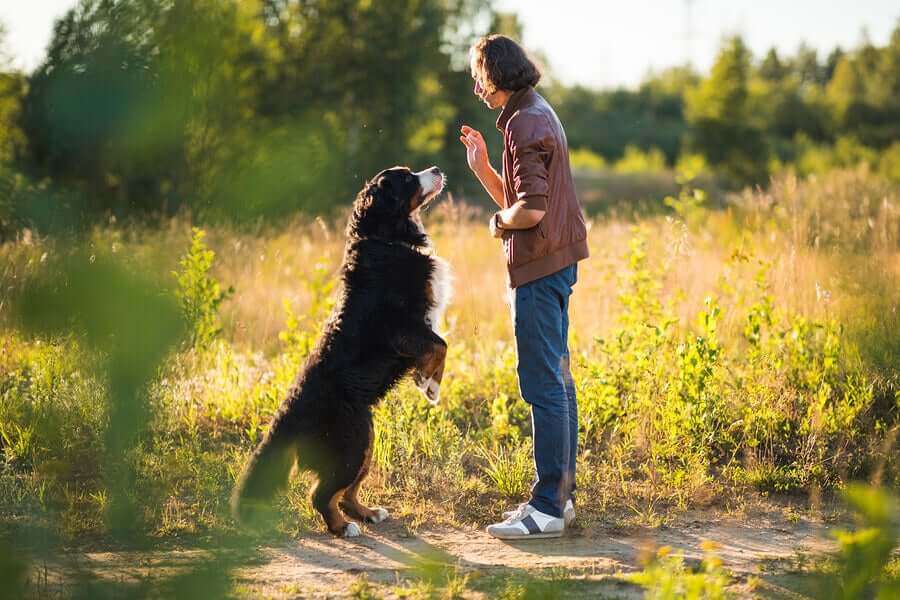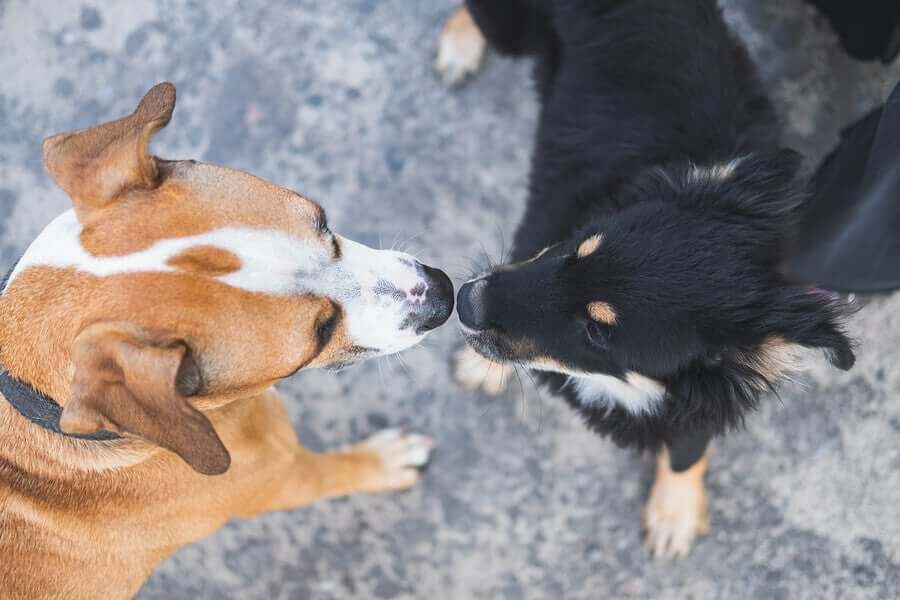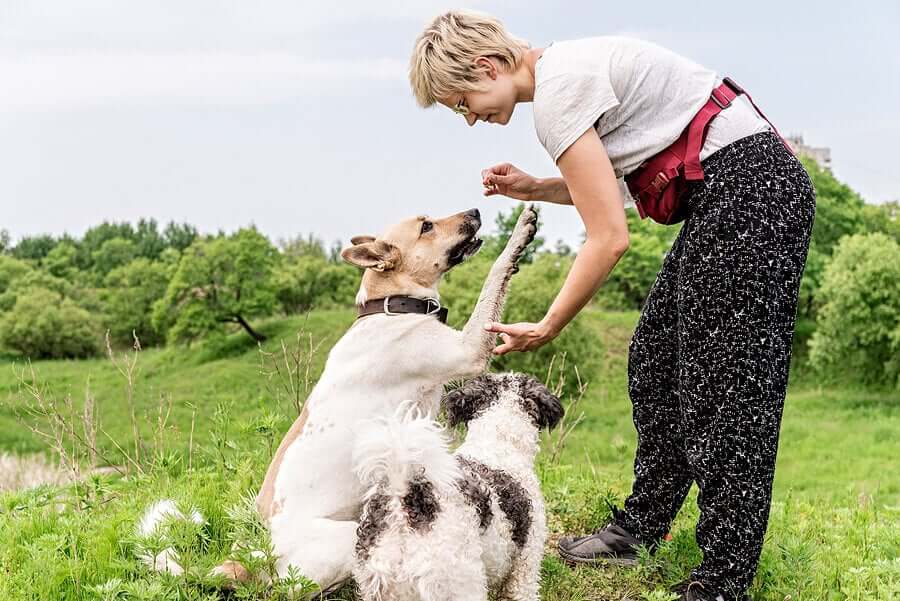Dog Training Goals and Commands

Basically, the goals of dog training focus on obedience. Thus, the training seeks to have the dog learn how to understand and follow commands or instructions. Without a doubt, a trained dog is a welcomed pet almost anywhere.
Ideally, all dogs should know the basic obedience commands such as “come”, “sit”, “down” and “stay”. It’s important to note that dog training should be pleasant and include short sessions of 5 to 10 minutes. Every session must have a positive closure, practicing a command that the dog already knows well.
Although it’s common to think that training is designed exclusively for puppies, there’s no age limit for a dog to learn new things. However, we must always respect the dog’s physical abilities and limitations when training them.
The importance of defining goals in dog training
Beyond learning basic obedience commands, it’s important that owners and/or trainers define what the training goals are. Clearly defining goals makes the training more consistent and focused on results. Below are some of the most commonly set goals for dog training.
Hygiene habits
This is the number one training. Sphincter control is an indispensable requirement for a dog living inside the home. However, keep in mind that no dog is born with the instinct to know where they shouldn’t do their business.
Thinking about the changes that life brings, it’s appropriate to emphasize the importance of teaching your dog to perform their business on different types of surfaces. This will include grass, dirt, rocks, gravel and even sometimes out on the street or sidewalk if there’s no other suitable area (always cleaning up after them of course).
Proper socialization
This topic should be properly defined, as trainers will approach it differently for a guardian dog, a service dog, or a companion dog. However, in a general sense, it’s important that puppies learn to be friendly with all kinds of people whether they are friends, family, guests, or other dogs.

Tolerance to environmental stimuli
This aspect is especially important in the training of guide dogs. This kind of training will allow the dog to access restaurants, cinemas, shopping centers, baseball games, etc.
Dog training should never include punishment
It may not be obvious for some, but there are enough reasons to know that no kind of punishment should ever be given to a dog. Especially when training them, you should never yell at them, hit them, or use the chain or leash to hurt them. On the contrary, dog training should be a fun experience that includes rewards for a job well done.
Keep in mind that a dog’s motivation will vary depending on their personality. Therefore, rewards can help increase their motivation. As a result, you must make sure that the reward you’re using for your dog is the most effective one for them and suits their character.
- Ideally, you should reward them within a second or two of them obeying your command. This will allow them to establish a connection between your command and their response.
- When you give them a command, do it briefly and say it only once. Dogs can remember a command for about two minutes.
- Don’t forget that commands should be short words, to make it easier for them.

Candy as a reward
The treats you give them as a reward should be small in size, require little chewing and shouldn’t crumble apart. You don’t want to lose your dog’s attention by offering something that will take time to eat or clean.
If the reward method you chose is giving them treats, the training sessions should be planned before a meal.
Praising the dog
On the other hand, if you plan to praise your dog as a reward, speak loudly, and enthusiastically. You should plan your training session when your dog’s motivation is high.
If your dog is a high-energy pet, we recommend that you start training sessions after a walk, so that the dog can spend some extra energy and avoid being restless after.
Caressing the dog
If your reward of choice is to caress the dog, do it on the side of their face, chest or back and not on the top of the head.
Consistency, patience, and receptivity are key in dog training
Initially, training sessions should be frequent (daily, for example), for your dog to properly memorize and learn the command you want to teach them.
Once they’ve learned it, be sure to praise them right away. And as for candy or treat rewards, you don’t need to always give them; it would be advisable that you do so only periodically.
In sum, the training experience is not only bonding, but also teaches a dog about acceptable behavior. Don’t forget that training should be a fun, rewarding, and fulfilling experience for both of you. We hope you enjoyed this article and wish you happy training!
All cited sources were thoroughly reviewed by our team to ensure their quality, reliability, currency, and validity. The bibliography of this article was considered reliable and of academic or scientific accuracy.
- Minhinnick, S., Papet, L. E., Stephenson, C. M., & Stephenson, M. R. (2016). 12 Training Fundamentals and. Canine olfaction science and law: Advances in forensic science, medicine, conservation, and environmental remediation, 155.
- González Ramírez, M. T., Landero Hernández, R., & Vanegas Farfano, M. (2017). Differences between clicker and voice when used as event markers in shaping novel behaviors in dog training. Informes psicológicos (Medellín), 17(2), 67-77.
